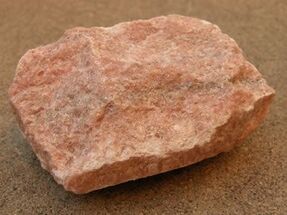Marble
Marble forms from the metamorphic recrystallization of limestone. The mineral calcite interlocks and deforms due to its subjection to heat and pressure. This creates a hard rock completely made up from calcite crystals. When its closely related dolostone is subjected to heat and pressure it forms dolomitic marble.
Origin
Marble forms at convergent plate boundaries where it is exposed to regional metamorphism. This can be done by heat and pressure over a longer time or when the limestone touches a hot magma body. Before it is metamorphosed the limestone consist of fossil material and biological debris. This debris and material recrystallizes during metamorphism creating a whole other texture. The longer the limestone is subjected to heat and pressure the bigger the calcite crystals grow.
Characteristics
Marble is usually a light-colored rock. When it is formed from a limestone with very few impurities, it will be white in color. Marble that contains impurities such as clay minerals, iron oxides, or bituminous material can be bluish, gray, pink, yellow, or black in color.
Being composed of calcium carbonate, marble will react in contact with many acids, neutralizing the acid. It is one of the most effective acid neutralization materials. Marble is often crushed and used for acid neutralization in streams, lakes, and soils.
Being composed of calcite, marble has a hardness of three on the Mohs hardness scale. As a result, marble is easy to carve, and that makes it useful for producing sculptures and ornamental objects. The translucence of marble makes it especially attractive for many types of sculptures.[1]
References
- https://geology.com/
- NEN-EN-ISO 14688-1:2019
Marble

| Type | Metamorphic rock |
|---|---|
| Clasts | Fine |
| Hardness | Soft |
| Color | Light colored |
| Components | Calcite |
| Touch | Rough |
| Image | Marble |